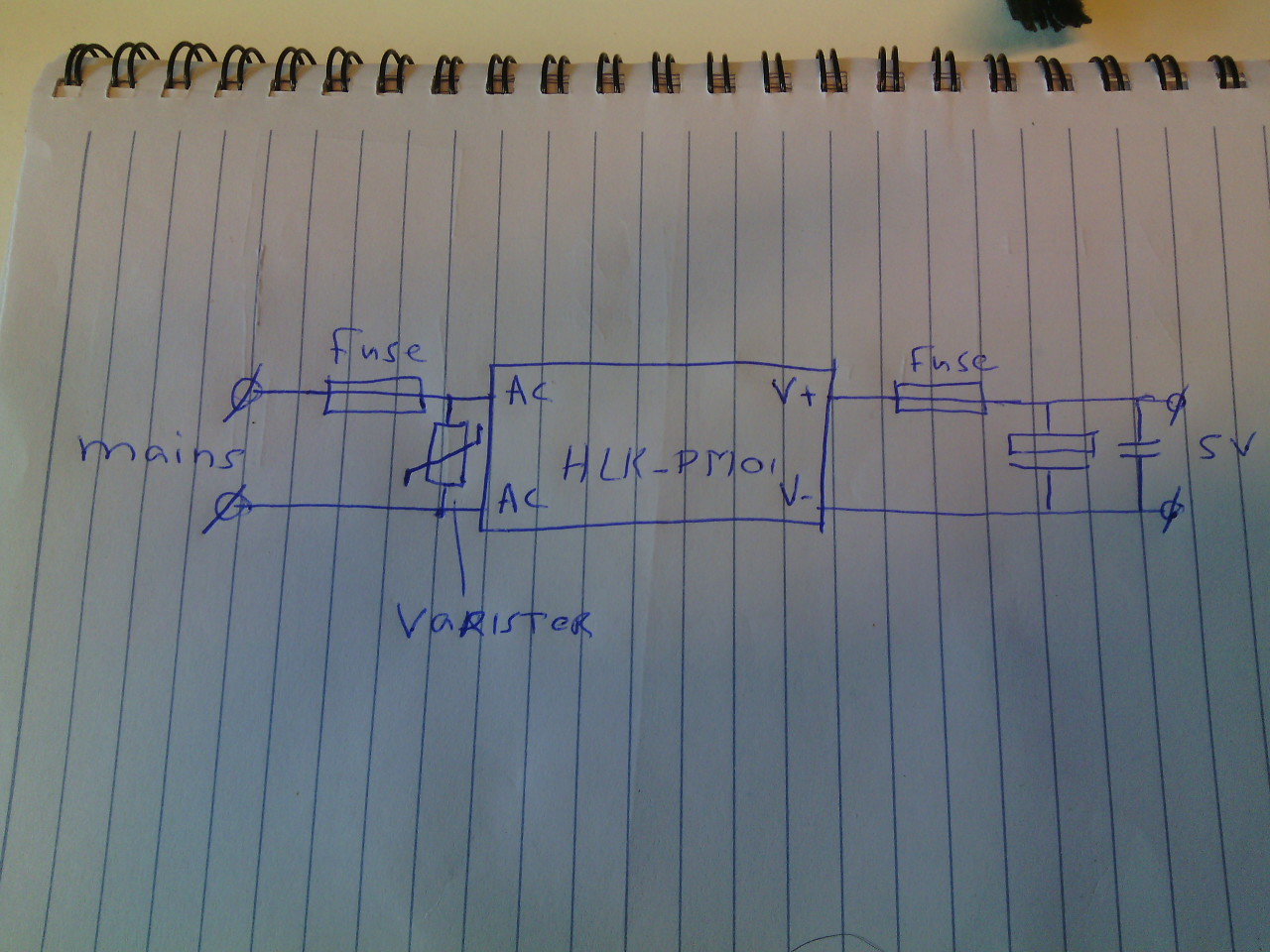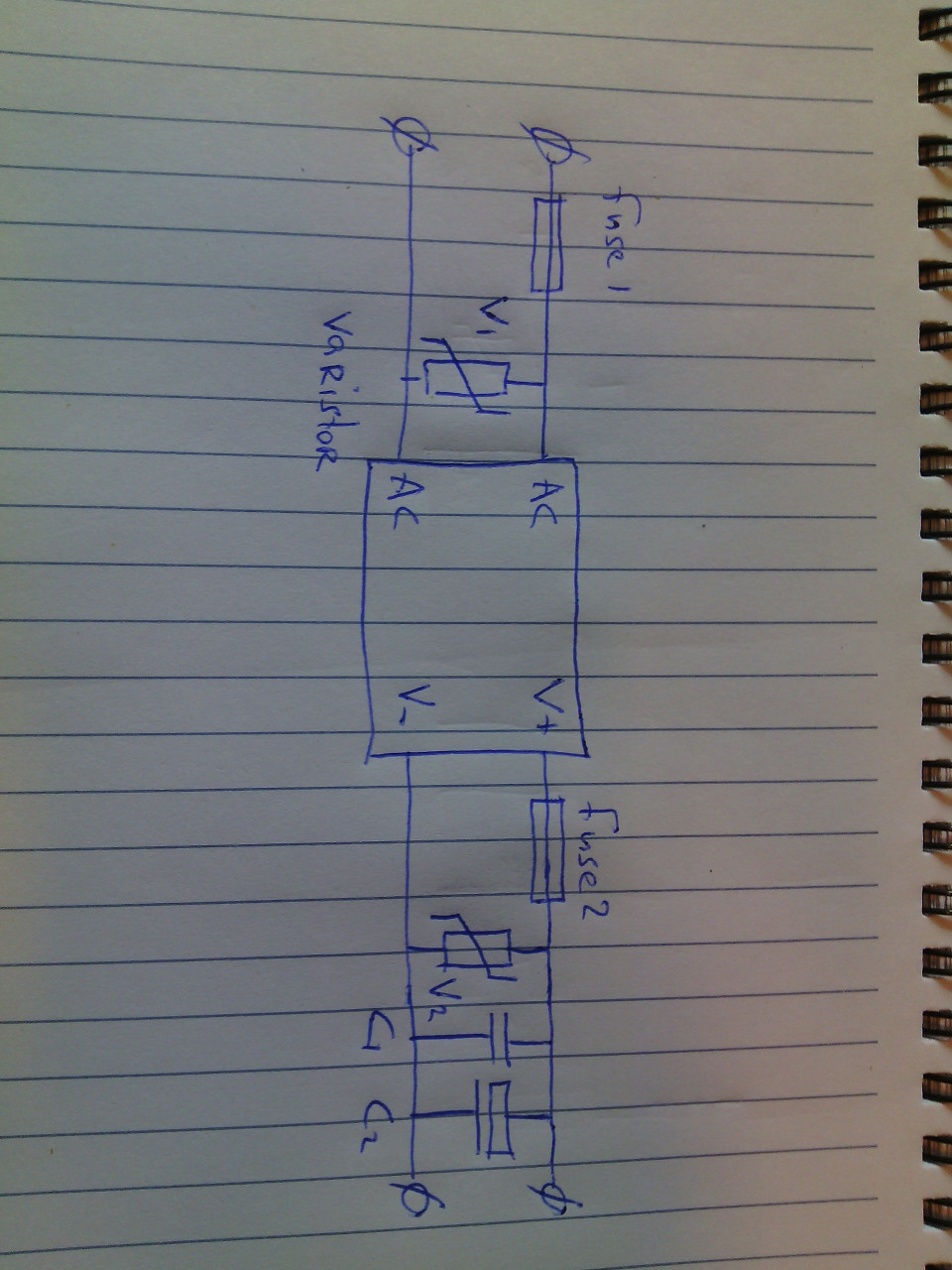Safe In-Wall AC to DC Transformers??
-
Hey guys, I wrote to the owner of the site suggested by @Moshe-Livne. He replied saying that he can test the HLK.
He mentioned that usually he takes at least two units (so if one burn he can continue the testing). I will send one from my lot, perhaps we have a brave guy to gave up one more? (a sacrifice of few to save many ) ;-) Let me know and I will share the address via PM (Denmark).
-
Hey guys, I wrote to the owner of the site suggested by @Moshe-Livne. He replied saying that he can test the HLK.
He mentioned that usually he takes at least two units (so if one burn he can continue the testing). I will send one from my lot, perhaps we have a brave guy to gave up one more? (a sacrifice of few to save many ) ;-) Let me know and I will share the address via PM (Denmark).
@rvendrame Considering cost of postage and logistics involved it would probably be cheapest to just order two units from Ali to him? its 8$ including shipping if i remember correctly
-
@Bertb Once again, thank you for all your work with this! I can't wait to start building with this! This will be so helpful to have a safer method instead of just dismantling old phone chargers and rolling the dice.
I couldn't open the schematic. What is the file extension? Also, would you mind posting the required parts for 110v if they are any different than what you will be providing @Atomfire?
Thanks!
Pete
-
@Bertb I tried adding "html" suffix to it but it didn't work.
-
One option is to click on the link and download the file. After the file is completely downloaded, just add the extention .jpg to it.
The result is as following:

-
Something went wrong with uploading the file, I think.
Herewith a new schematic with a suggested bill of material.
It is highly experimental still, but I ordered the components yesterday.I am specially interested in working with the PTC fuse.
I hope the proposed circuit works for you. Please keep the maximim continuous output power in mind. It is only 3 Watts (600 mA).
In some cases you might need to add C1's (rule of thump 1 per chip or chip VCC) and/or need to increase the value of C2. This depends on the fluctuations in the power demand.With the proposed values for C1 and C2, the ripple remained below 50 mV at 500 mA.
Also keep in mind that a remaining oscillation frequency residue appears in the output of some 60kHz.. If capacitors are not able to filter that out, a small coil might be needed.Well it is experimenting that makes this fun, isn't it?

-
Hey guys, I wrote to the owner of the site suggested by @Moshe-Livne. He replied saying that he can test the HLK.
He mentioned that usually he takes at least two units (so if one burn he can continue the testing). I will send one from my lot, perhaps we have a brave guy to gave up one more? (a sacrifice of few to save many ) ;-) Let me know and I will share the address via PM (Denmark).
@rvendrame said:
Hey guys, I wrote to the owner of the site suggested by @Moshe-Livne. He replied saying that he can test the HLK.
He mentioned that usually he takes at least two units (so if one burn he can continue the testing). I will send one from my lot, perhaps we have a brave guy to gave up one more? (a sacrifice of few to save many ) ;-) Let me know and I will share the address via PM (Denmark).
I am in for this.
-
Hey guys, I wrote to the owner of the site suggested by @Moshe-Livne. He replied saying that he can test the HLK.
He mentioned that usually he takes at least two units (so if one burn he can continue the testing). I will send one from my lot, perhaps we have a brave guy to gave up one more? (a sacrifice of few to save many ) ;-) Let me know and I will share the address via PM (Denmark).
@rvendrame said:
Let me know and I will share the address via PM (Denmark).
I will send him a powersupply too. :stuck_out_tongue_winking_eye:
-
Something went wrong with uploading the file, I think.
Herewith a new schematic with a suggested bill of material.
It is highly experimental still, but I ordered the components yesterday.I am specially interested in working with the PTC fuse.
I hope the proposed circuit works for you. Please keep the maximim continuous output power in mind. It is only 3 Watts (600 mA).
In some cases you might need to add C1's (rule of thump 1 per chip or chip VCC) and/or need to increase the value of C2. This depends on the fluctuations in the power demand.With the proposed values for C1 and C2, the ripple remained below 50 mV at 500 mA.
Also keep in mind that a remaining oscillation frequency residue appears in the output of some 60kHz.. If capacitors are not able to filter that out, a small coil might be needed.Well it is experimenting that makes this fun, isn't it?

@Bertb can now see the scheme! thanks. But can't see the BOM
-
... it must be friday ...
-
... it must be friday ...
-
As you please ...
-
As you please ...
-
@Moshe-Livne said:
@rvendrame Considering cost of postage and logistics involved it would probably be cheapest to just order two units from Ali to him? its 8$ including shipping if i remember correctly
Yes, it makes all sense. The only downside is that if we buy all at same time probably he will get all from the same lot, but in my opinion it by far doesn't invalidate the testing.
So, myself, @Bertb , @Didi = 3 PSUs, better than 2. I will share with you both the ship-to address ok? Thanks a lot!
-
I'm really happy to hear that these HLK power modules are considered to be safe. I've been using them for a few weeks already, but didn't have a clue what was inside (and whether they were ACTUALLY safe).
One question regarding the varistor and PTC fuses though:
Any reason (or specifications) why you chose those specific components? I've been looking for myself as well, but came up with slightly different components.Fuse1 and 2: PTC Resettable Fuses 250V 1A TRF250-1000
Varistor1: [10D391K 10K391 390V varistor diameter 10mm AC 250V DC 320V]
(http://www.aliexpress.com/item/Varistor-10D391K-10D-391K-VDR-10K391-Metal-voltage-dependent-resistor-50pcs-bag/1912418587.html)Varistor2: [5.5V Varistor original Varistor resistor]
(http://www.aliexpress.com/item/SMD-1206-5-5V-Varistor-original-Varistor-resistor-100pcs-lot/32243046238.html)If anyone with a bit more experience could have some feedback on these components, that would be really really appreciated!!
-
@Moshe-Livne said:
@rvendrame Considering cost of postage and logistics involved it would probably be cheapest to just order two units from Ali to him? its 8$ including shipping if i remember correctly
Yes, it makes all sense. The only downside is that if we buy all at same time probably he will get all from the same lot, but in my opinion it by far doesn't invalidate the testing.
So, myself, @Bertb , @Didi = 3 PSUs, better than 2. I will share with you both the ship-to address ok? Thanks a lot!
@rvendrame said:
@Moshe-Livne said:
@rvendrame Considering cost of postage and logistics involved it would probably be cheapest to just order two units from Ali to him? its 8$ including shipping if i remember correctly
Yes, it makes all sense. The only downside is that if we buy all at same time probably he will get all from the same lot, but in my opinion it by far doesn't invalidate the testing.
So, myself, @Bertb , @Didi = 3 PSUs, better than 2. I will share with you both the ship-to address ok? Thanks a lot!
:+1:
-
I'm really happy to hear that these HLK power modules are considered to be safe. I've been using them for a few weeks already, but didn't have a clue what was inside (and whether they were ACTUALLY safe).
One question regarding the varistor and PTC fuses though:
Any reason (or specifications) why you chose those specific components? I've been looking for myself as well, but came up with slightly different components.Fuse1 and 2: PTC Resettable Fuses 250V 1A TRF250-1000
Varistor1: [10D391K 10K391 390V varistor diameter 10mm AC 250V DC 320V]
(http://www.aliexpress.com/item/Varistor-10D391K-10D-391K-VDR-10K391-Metal-voltage-dependent-resistor-50pcs-bag/1912418587.html)Varistor2: [5.5V Varistor original Varistor resistor]
(http://www.aliexpress.com/item/SMD-1206-5-5V-Varistor-original-Varistor-resistor-100pcs-lot/32243046238.html)If anyone with a bit more experience could have some feedback on these components, that would be really really appreciated!!
@aproxx I would say that the 50 mA fuse is too weak. The HLK draws between 0.1 and 0.2 Amp and can surge 10 Amp. So, I think the 1A version is good for both situations input and output. The varistor is only good for the output.
One thing to consider though. This is also chinese stuff ... is it really safe or are we introducing a new problem? :smile: -
@Bertb Aaah yes now I see. It does seem to draw much more peak current than I expected! Then I'll just use the same component as I'm using for Fuse 2.
What do you mean by "The varistor is only good for the output."? You're using one as input and one as output in your diagram as well or am I missing something?And yes, I know this is Chinese stuff again.. But single (chinese) components never failed on me (until now). :smiley:
